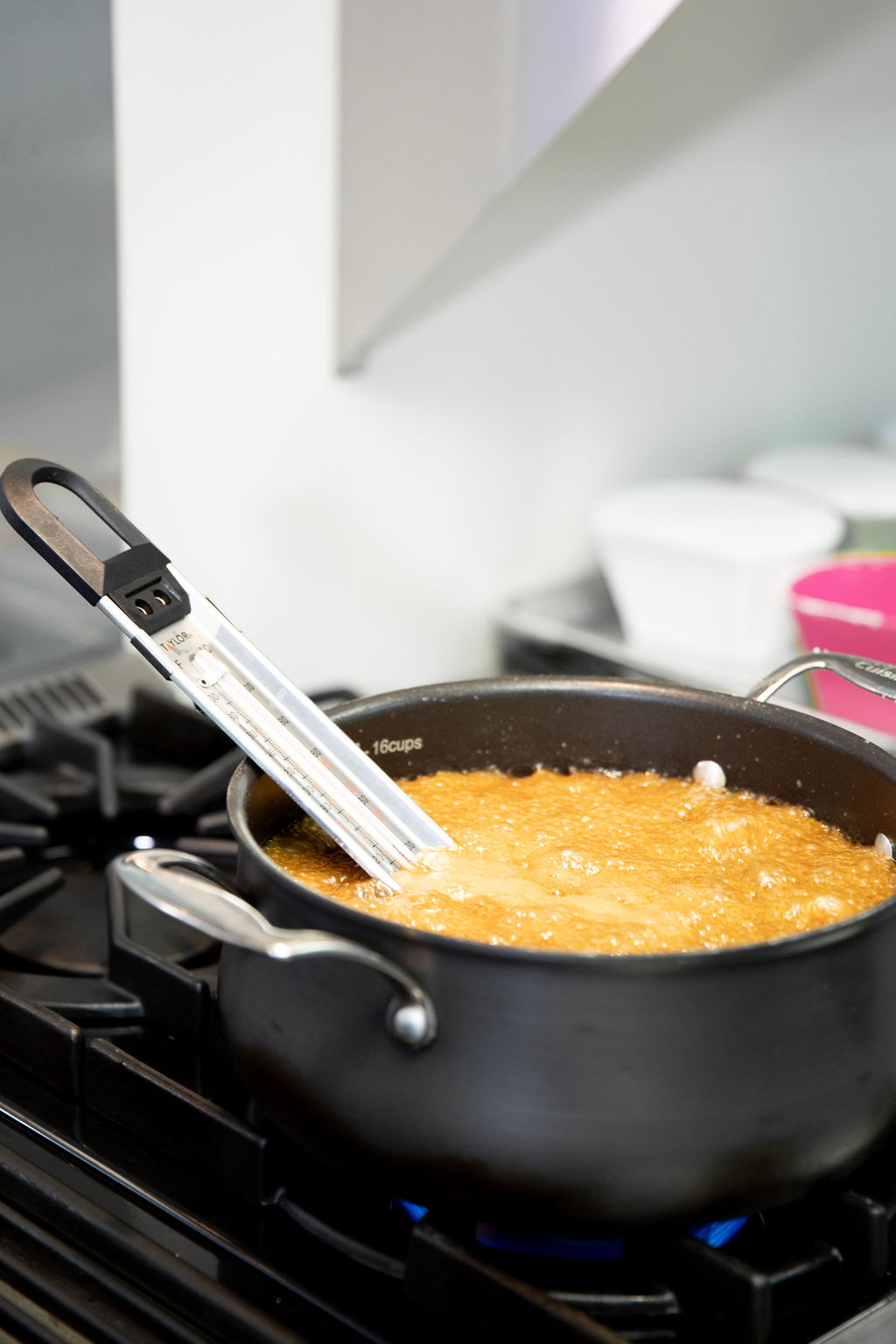Caramel vs Butterscotch vs Toffee: What’s the Difference?

Written by Cache Toffee
Toffee rose to popularity all the way back in the early nineteenth century in England. Since then, people have been snacking on this delicious treat. But what sets it apart from other popular types of sugar candy?
When it comes to caramel vs butterscotch vs toffee, are there any actual differences? They all taste delicious, so what differentiates them?
We’re here to talk all about what makes each of these sweets unique. Read on to learn more.
What Is Caramel?
Plain caramel is essentially cooked white granulated sugar. You combine water, sugar, and sometimes corn syrup and heat them up until the sugar dissolves. You leave the mix to boil until it turns brown (but be careful because it can easily burn).
Then, you can add cream, butter, and vanilla syrup to further improve the taste and texture. Many people also use non-dairy alternatives.
Caramel can be hard, chewy, or even liquid (when it’s used as a syrup or topping). The higher the temperature when you’re making the caramel, the harder it will set (though ingredients also play a part in the ending texture of caramel).
What Is Toffee?
Toffee is also made from brown sugar and butter. It’s similar to butterscotch aside from the fact that it’s cooked for longer. When a chef cooks toffee, they want the end result to be hard and brittle with a satisfying crunch.

What Is Butterscotch?
Butterscotch is another form of cooked sugar candy! Instead of using white granulated sugar, however, you use brown sugar to make butterscotch. This gives it a different flavor.
You start by melting butter together with brown sugar. When the mixture is no longer grainy, you add cream and boil it all until it’s a golden color.
Like caramel, butterscotch can also be hard, chewy, or liquid. More often than not, it’s somewhat soft.
Toffee is always going to be hard, unlike butterscotch and caramel.
Sugar Stages Temperature Comparison
When you cook sugar to make any type of sugar candy, the sugar concentration determines the final result.
The longer and hotter you cook the mixture, the higher the sugar concentration (because everything else boils away). These are a few examples of different textures you may want from your sugar candy and the temperatures required to achieve them.
For a soft crack candy, like butterscotch, you’d want a temperature of 270 to 290 degrees. This will leave the percentage of sugar at around 95%. For a hard crack candy, like toffee, you’d aim for a temperature of 300 to 310 degrees and a 99% sugar concentration.
For a brown caramel liquid, the temperature will be 338 degrees and the sugar concentration will be 100%.
There are some variations depending on your desired end result. Making sugar candy is a delicate and precise process.
Caramel vs Butterscotch vs Toffee: That’s What You Need to Know
When it comes to the differences between caramel vs butterscotch vs toffee, they may seem minor, but they change the end results in a big way. These three types of sugar candy all taste different despite their similar ingredients and cooking methods.
Do you love delicious toffee? At Cache Toffee, we make fantastic English toffee that’s perfect for snacking, gifts, and more. Visit our shop to buy some today.
